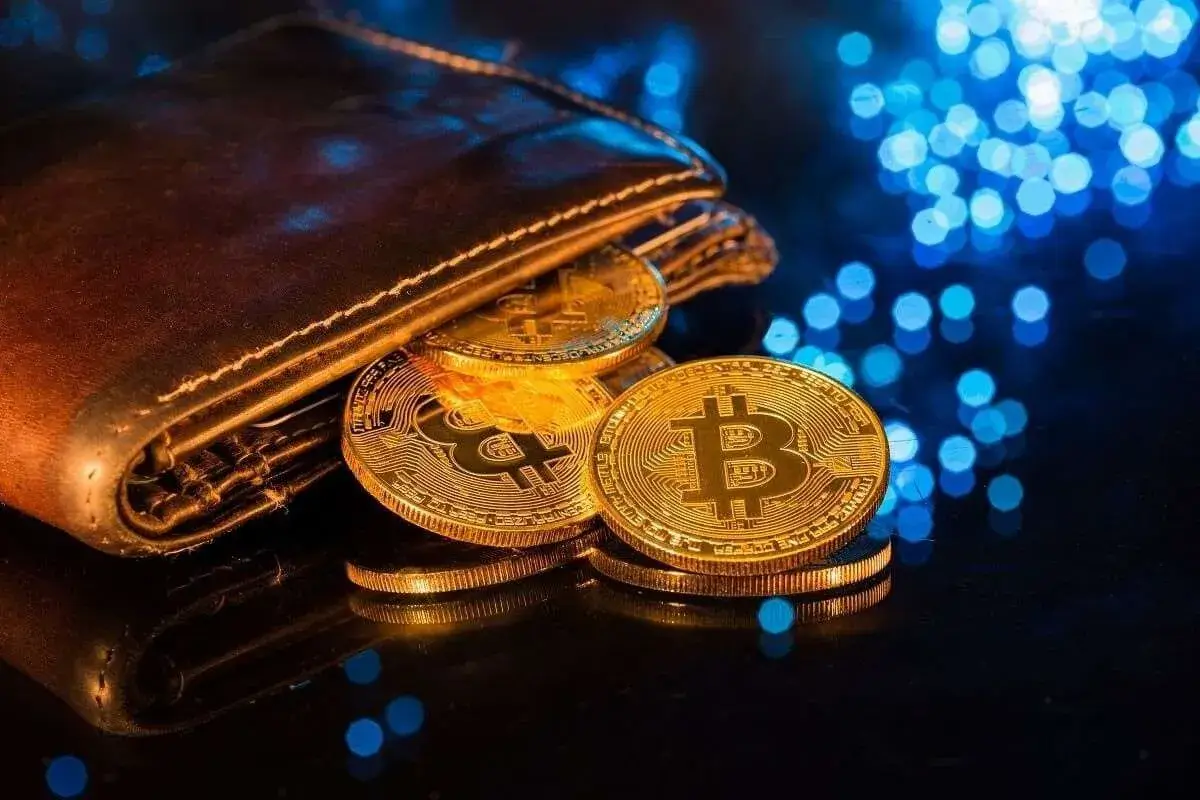In this article, we look into the story of FTX and where to keep crypto for maximum safety.
Cryptocurrency exchanges allow people to buy and sell digital assets and exchange one asset for another.
They also let them store their crypto in custodial wallets.
The wallets belong to the exchange that holds the funds for the clients.
Clients lose their cryptocurrencies if something happens to the wallet and hackers gain access to it.
Most exchanges observe KYC (Know Your Customer) and AML (Anti Money Laundering) laws.
If you open an account at such an exchange, you must provide your ID and other personal information the exchange may require.
The exchange will also likely communicate your crypto trades to local tax authorities.
The paradoxical thing about crypto is that while it is supposed to be decentralized and peer-to-peer, it is still heavily tied to centralized onramps and structures like crypto exchanges.
The biggest crypto exchanges make up the backbone of the crypto industry.
They have launched cryptocurrencies of their own and dominate the space.
That said, cryptocurrencies like Bitcoin are independent of the ecosystems exchanges have created.
And even if these centralized entities fail, as they sometimes seem to do, bitcoin continues unabated.
In the short term, the fallout from the collapse of a major cryptocurrency exchange can affect asset prices and wreak havoc among investors.
Disclosure: This article contains affiliate links. We may earn a commission at no extra cost from purchases made through these links.
The FTX Collapse
Crypto industry participants rank the crypto exchanges by volume.
The more money and digital assets they turn around, the bigger they are.
And the harder they fall when that time comes.
FTX used to be the second-biggest cryptocurrency exchange in the world by volume.
In addition to retail users, it served many corporate clients and had many corporate investors.
The world’s top cryptocurrency exchange remains Binance.

The Rise
Founded in 2019, FTX grew into a top destination for crypto funds and crypto-related fiat investments through the combination of aggressive marketing strategies and promises of attractive yields on deposits.
Learning that they can park their crypto and fiat funds at FTX and collect passive returns on them, exceeding what banks offer these days, many institutional investors gave in to the FTX hype.
Celebrities endorsed the FTX brand, and sponsorships sprang up.
The 30-year-old founder, Sam Bankman-Fried, became the face of his company, and with it, to some degree, of the crypto industry.
Venture capital groups bought into the FTX opportunities, investing around $2 billion in the organization.
The crypto boom of 2020-2021 played its role in FTX’s rise.
From around $10,000 to its all-time high of over $68,000, bitcoin unleashed the crypto bulls, scammers, retail investors, and institutional interest.
It seemed like nothing could stop Bankman-Fried’s crypto empire.
The Fall
But the history of Bitcoin is little more than a string of consecutive booms and busts.
And the latest boom was bound to be followed by a bust.
In early 2022, the price of Bitcoin, the barometer of the entire crypto industry, began to decline.
Hitting $40,000 first and dropping below $20,000 signaled the beginning of the latest crypto winter.
Built on hype and expectations of unimpeded growth, FTX began to crack.
Some smaller operations folded and closed.
And Bankman-Fried even bought up some smaller competitors.
Having bought into his hype, the founder of Alameda Research created a crypto investing firm.
And he padded its balance sheet with FTT, the digital currency of the FTX ecosystem.
FTT was a “minted” token.
It observed none of the rules that make Bitcoin valuable and featured none of its transparency.
It was bound to unwind and turn to dust.
The watershed moment that proved to be the beginning of the end for FTT happened when someone leaked Alameda Research’s balance sheet.
When FTT holders learned the truth, they began dumping the asset.
Binance, a fellow crypto exchange with large FTT holdings, announced that it would sell its FTT tokens.
As the FTT price dropped, everyone scurried to withdraw funds from the exchange, even though no one knew then how Alameda’s problems would affect FTX.
As the funds continued to pour out of the exchange in classic bank-run fashion, FTX suspended withdrawals on November 8 as it couldn’t honor them.
In the coming days, the extent of the FTX debacle will come to light. It became clear that Bankman-Fried and his people moved funds between Alameda and FTX.
And they ended up about $8 billion short of being able to honor investors’ withdrawals.
FTX had failed to produce properly audited balance sheets.
And it failed to follow standard financial reporting procedures.
No one knew what happened to the money and where it went.
Those looking to mop up the mess could only secure around $750 million worth of crypto from the accounts of FTX and Alameda.
Adding Insult to Injury
To make an already hopeless mess even worse, FTX suffered a hack just after it had filed for bankruptcy.
The alleged criminals siphoned $400 million from FTX, raising suspicion that they may have been insiders.
Blockchain investigators traced the stolen funds, established connections, and identified the perpetrator.
Someone with access to FTX’s cold wallets was behind the heist.
The person in question looted the wallets through the Tron blockchain, attempting to send USDT several times due to insufficient TRX to pay the transaction fees.
The thief then sent 500 TRX from an exchange-based wallet to cover the transaction costs.
Exchange personnel has already identified the perpetrator.
The exchange the thief used was Kraken.
Investigators have contacted law enforcement, and the exchange has frozen accounts linked to the crime.
Binance Takeover Falls Through
Binance, one of FTX’s major investors, seemed poised to take over the ailing operation, potentially bailing it out.
On November 8, Binance’s Changpeng Zhao announced that his organization would buy FTX.
As the extent of the collapse and the chaos around the bookkeeping became clear, Binance backed out of the deal, leaving FTX no choice but to declare bankruptcy.
As Bankman-Fried stepped down as the CEO of the ill-fated exchange, the Department of Justice and the Securities and Exchange Commission have gotten involved in the investigation.
Should You Keep Your Crypto at an Exchange?
In addition to investors and other high-profile parties, the FTX fiasco affected many regular exchange users.
Getting money out of a bankrupt exchange and facing an investigation is extremely difficult, if not impossible.
And not even cryptocurrency tracing can help you in this instance.
FTX’s meltdown is an extreme example of how an exchange can veer off-course.
The collapse resulted from criminal negligence, illegal handling of funds, and downright abuse of clients’ and investors’ trust.
It was a master class on how one should not run an exchange.
The hack was the cherry on top of the fiasco.
Centralized crypto platforms like FTX are vulnerable to human shortcomings, greed, and bias.
That does not mean every exchange is like FTX.
But if you keep significant funds in crypto and keep them all at an exchange, you may want to consider alternatives.
Moving at least some of your funds to safer storage would make sense.
Self-custody and Cold Storage
For many, one of the most attractive promises of Bitcoin is that it allows people to act as their banks.
Self-custody comes with obvious advantages, more responsibility, and some dangers.
Cold storage allows you to act as your bank.
A small device lets you store your private keys safely offline, away from the prying eyes and greedy hands of hackers and scammers.
If you store your crypto in a cold wallet, the only way someone can steal it from you is to convince you to hand it over.
Ledger
Ledger is a cold wallet maker based in France.
Its devices, the Ledger Nano S Plus and the Ledger Nano X are small and easy to set up.
Ledger devices require an intentional physical confirmation from the user before they allow any funds to be sent.
While offline, no one can touch any assets on a Ledger cold wallet.
And these wallets support over 5,500 crypto assets, with support for more added periodically.
Ledger suffered a hack in 2020.
Criminals got their hands on Ledger’s database of customers, releasing sensitive information such as addresses, emails, names, and phone numbers through the dark web.
Thieves did not manage to steal any cryptocurrencies through the hack.
Using the stolen information, they unleashed a barrage of scams.
That resulted in some successful instances of theft.
Trezor
Trezor is a hardware wallet similar to Ledger in how it functions, though its design is different.
Unlike Ledger, Trezor has not experienced a hack yet.
And it has not exposed its clients’ sensitive information to the criminal underground.
Ellipal
Ellipal is a cold storage solution that uses QR codes instead of USB or Bluetooth connections.
So Where To Keep Crypto?
As the digital currency landscape grows, ensuring these assets’ secure storage becomes paramount. Ledger provides a strong solution through their Ledger Nano S Plus and Ledger Nano X hardware wallets. With support for over 5500+ cryptocurrencies, these wallets leverage secure cold storage technology to protect against digital threats.
Before purchasing, always research thoroughly and consider your unique needs to find the most suitable option. While this discount is a nice incentive, the priority should always be securing and conveniently managing your digital assets.
To transfer your funds from an exchange to a cold wallet, simply set up the latter and use it to generate a wallet address.
Log into your exchange and send your cryptocurrencies to the address your cold wallet gives you.
Check for confirmation.
Despite occasional mishaps, cold storage is the safest storage for your cryptocurrencies.
Even safer than cold storage would be to use a non-exchange online wallet, such as Zengo. (With over a million wallets, zero were ever hacked! Read our Zengo Wallet Review.)
Zengo is a non-custodial wallet available on mobile, which does not require using a key or seed phrase, so there’s no risk, like with most other wallets, of forever losing access to your funds due to forgetting your key. Instead, it is secured by encrypted biometrics.
They also allow store, buy, trade, send, and receive crypto, as well as connect to NFT & DeFi Dapps.
For most users, keeping only as much crypto in an exchange account as they intend to use for trading makes sense.
We offer complimentary consultations to determine if our Asset Tracing, Recovery Assistance, and Intelligence Services suit your case.
Please note that your name, comment, and timestamp will become public once you post a comment. Additionally, as our Privacy Policy outlines, we store this data, which might be used for research or content creation. By submitting a comment, you are providing consent to these terms.

